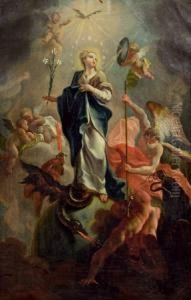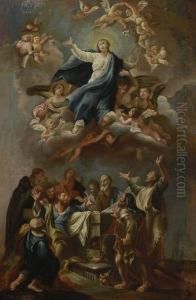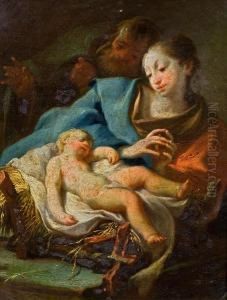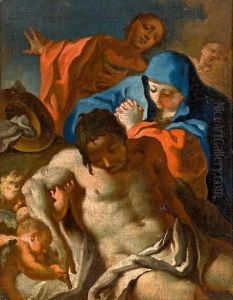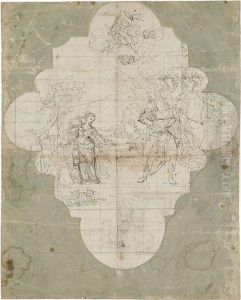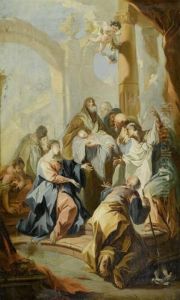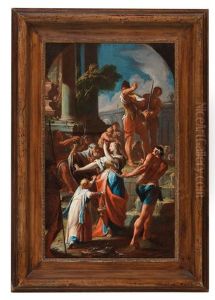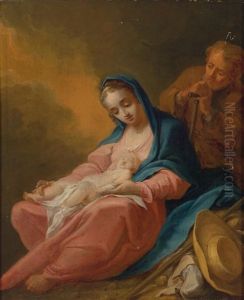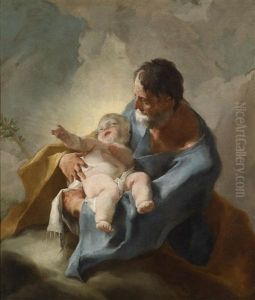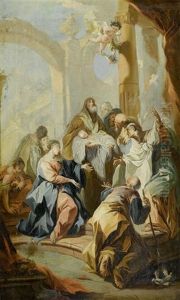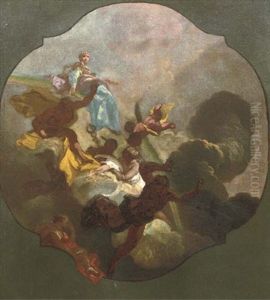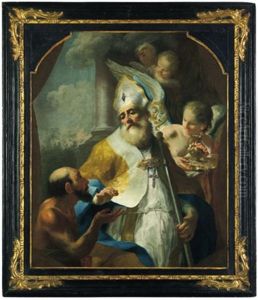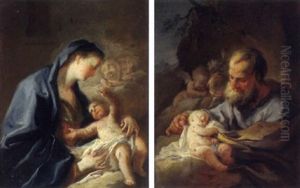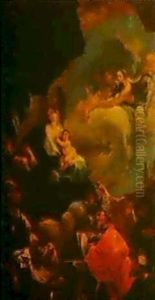Josef Ignaz Mildorfer Paintings
Josef Ignaz Mildorfer, also known as Joseph Ignaz Mildorfer or Milldorffer, was an Austrian painter born on October 13, 1719, in Innsbruck, Tyrol. Mildorfer came from a family with artistic roots; his father, Michael Ignaz Mildorfer (Mildorff), was also a painter and provided his son's initial training. Josef Ignaz later moved to Vienna to further his education, where he became a student at the Academy of Fine Arts Vienna, a prominent institution for art education in Austria.
Mildorfer's style was influenced by the Baroque tradition, which was prevalent in Europe during the 18th century. He was known for his dynamic compositions, vibrant use of color, and his ability to convey movement and drama within his works. His oeuvre primarily included religious paintings, altarpieces, and frescoes, which were often characterized by a certain grandeur and emotional intensity.
In 1751, Mildorfer received an appointment as a professor at the Academy of Fine Arts Vienna, a position that attested to his skills and reputation as an artist. During his tenure, he influenced a number of students and was involved in the academic art scene of the city. His work during this period contributed to the development of the late Baroque and early Rococo styles in Austrian art.
Mildorfer's legacy includes significant frescoes in the churches and monasteries of Austria, such as those in the St. Peter's Abbey in Salzburg and the Melk Abbey in Lower Austria. His religious works often reflected the values and spiritual fervor of the Counter-Reformation, which sought to reaffirm the tenets of Catholicism in response to the Protestant Reformation.
Josef Ignaz Mildorfer continued to work and teach until his death on November 8, 1775, in Vienna. After his passing, his style was seen as a bridge between the high Baroque and the emerging Rococo and Neoclassical movements that would dominate European art in the late 18th and early 19th centuries. Although not as widely recognized today as some of his contemporaries, Mildorfer's contributions to Austrian art are still appreciated by art historians and enthusiasts, particularly for his role in the development of religious art during a critical period of European history.
